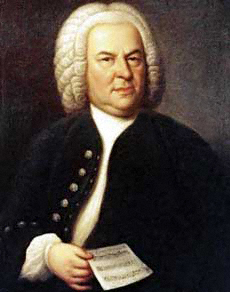

Johann Sebastian Bach (1685-1750) wrote his Cello Suite No. 1 in 1720. Bach's career as a composer and musician included positions such as church organist in the towns of Arnstadt and Mühlhausen; court organist and concertmaster for the Duke of Weimar; director of music for Prince Leopold of Anhalt at Cöthen; cantor of St. Thomas Church; and civic director of music for Leipzig. Bach's Leipzig position was one of the most prestigious musical positions in Germany at the time, and included responsibilities such as: music for the four main churches in Leipzig, musical training of students at a boarding school associated with St. Thomas, and various duties for the city of Leipzig 's musical affairs. In 1729, Bach added to his Leipzig responsibilities when he assumed leadership of the Leipzig collegium musicum, a voluntary organization founded by Telemann in 1704. Members of this collegium musicum included university students and professional musicians, and they contributed to the musical culture of the community with weekly concerts.
Bach was the father of twenty children: seven with his first wife, his cousin Maria Barbara Bach, and thirteen with his second wife, Anna Magdalena (half of his children did not survive past childhood). Bach taught his children music, and his family often performed together as a vocal and instrumental concert group. Some of Bach's children went on to become noted musicians such as Carl Philipp Emanuel Bach and Johann Christian Bach.
Bach's musical output was related to his employment, thus while he was employed as an organist at Arnstadt, Mühlhausen and Wiemer, he composed a large number of organ works. During his tenure as Kapellmeister at Cöthen, he wrote large amounts of instrumental works, and while he was Cantor at Leipzig, he wrote hundreds of cantatas and other sacred vocal works for church services. During Bach's term as leader of Leipzig 's collegium musicum, he wrote new instrumental music and he also created new arrangements of instrumental works he had written in Cöthen. It is interesting to note that Bach regarded the purpose of all of his music as being "to the glory of God," and he often inscribed his compositions with letters such as S.D.G. (the initials stood for soli Deo Gloria, meaning "to God alone be glory"). [15]
Bach composed his Six Suites for Solo Cello in 1720 while he was residing in Cöthen under the patronage of Prince Leopold. Bach's cello suites were not typical for this time period. Prior to the mid-18th century, solo music for cello was not only uncommon, but Baroque music for cellists rarely called for technically demanding skills found in Bach's cello suites such as multiple stops, complex bowing, barriolage, arpeggios, and left hand virtuosity. [16]TECHNIQUE TIPS: Bach's unaccompanied Cello Suite No. 1 is in the musical form of a suite. A suite may be described as a collection of pieces, put together in an ordered manner. During the Baroque era, pieces in a suite were often dance forms such as: allemande, courante, saraband, gigue, bourre, gavotte, and minuet. The excerpt used in this arrangement is the "Prelude" from Bach's Cello Suite No. 1. Bach often began his suites and sonatas with a prelude, a piece with an improvisatory style which serves as a prelude or introduction to other pieces in the musical composition. This piece calls for numerous string crossings and ends with a quadruple stop. To play the quadruple stop, play the bottom two notes as a chord first, then the top two notes as a chord (it should be noted that Bach's original arrangement of this piece ends with a triple stop).
© Copyright 2025 RK Deverich. All rights reserved.
Although this online bass class is provided free of charge, all rights are reserved and this content is protected by international copyright law. It is illegal to copy, post or publish this content in any form, and displaying any of this material on other websites, blogs or feeds is prohibited. Permission is given for individual users to print pages and perform music from this website for their personal, noncommercial use.